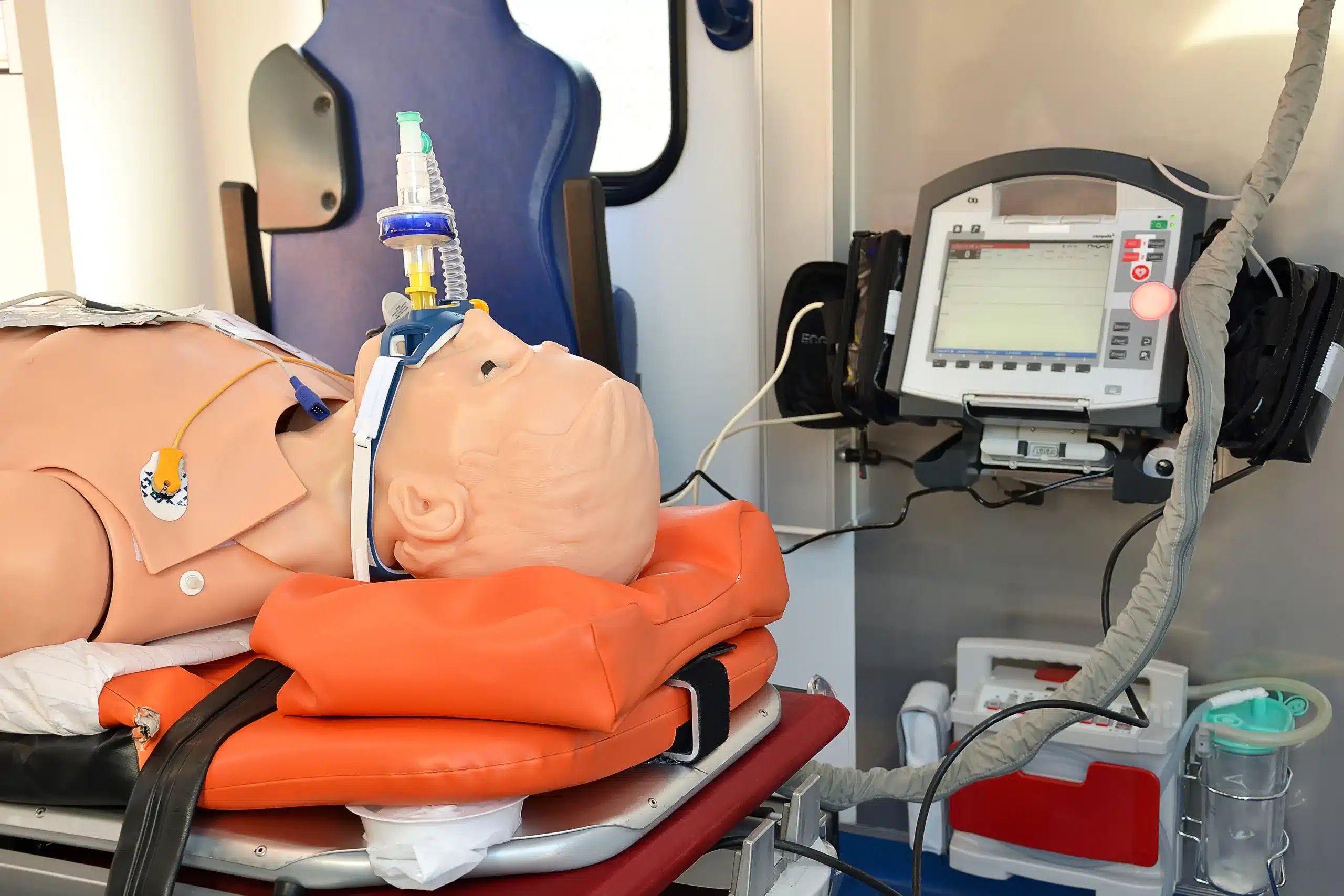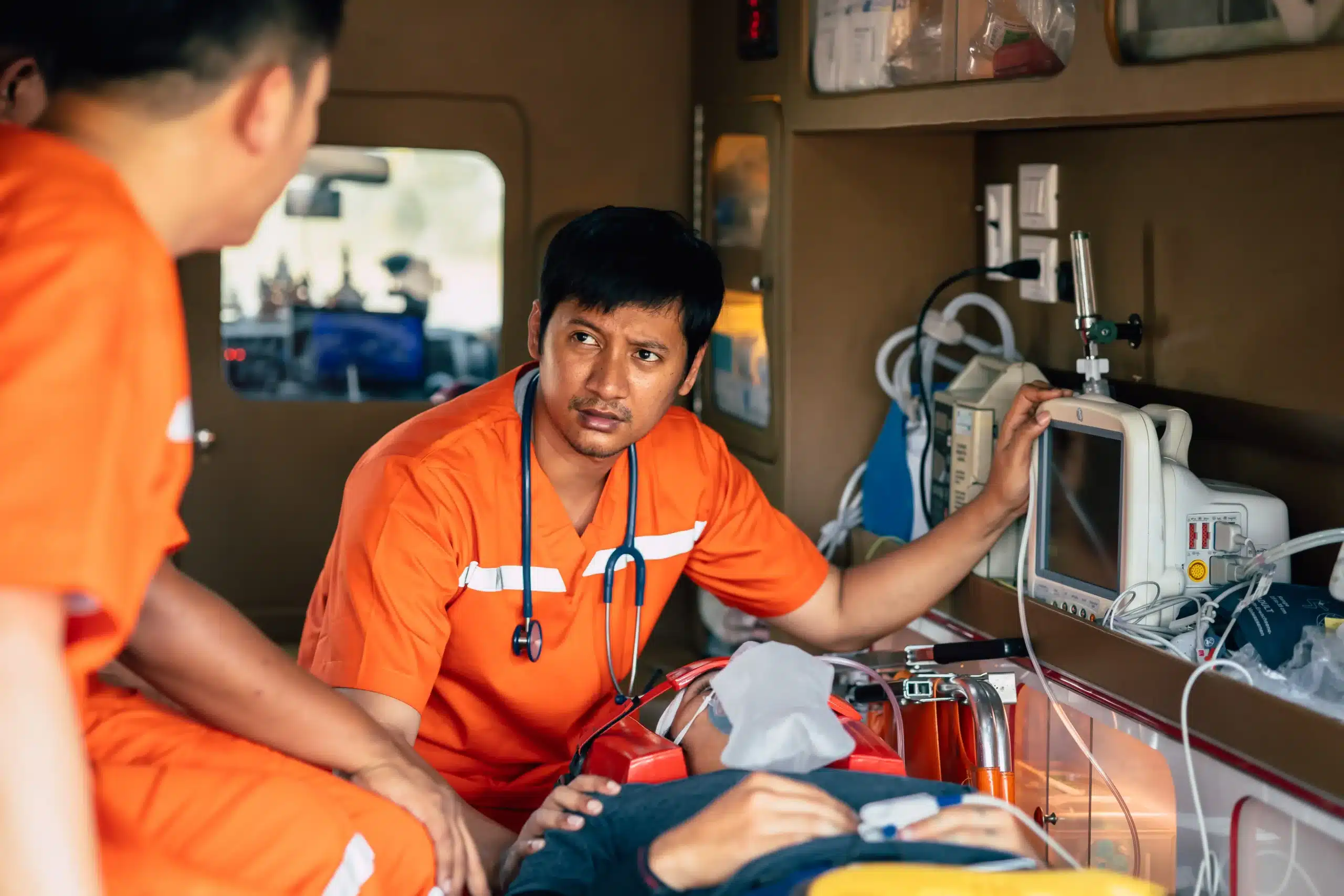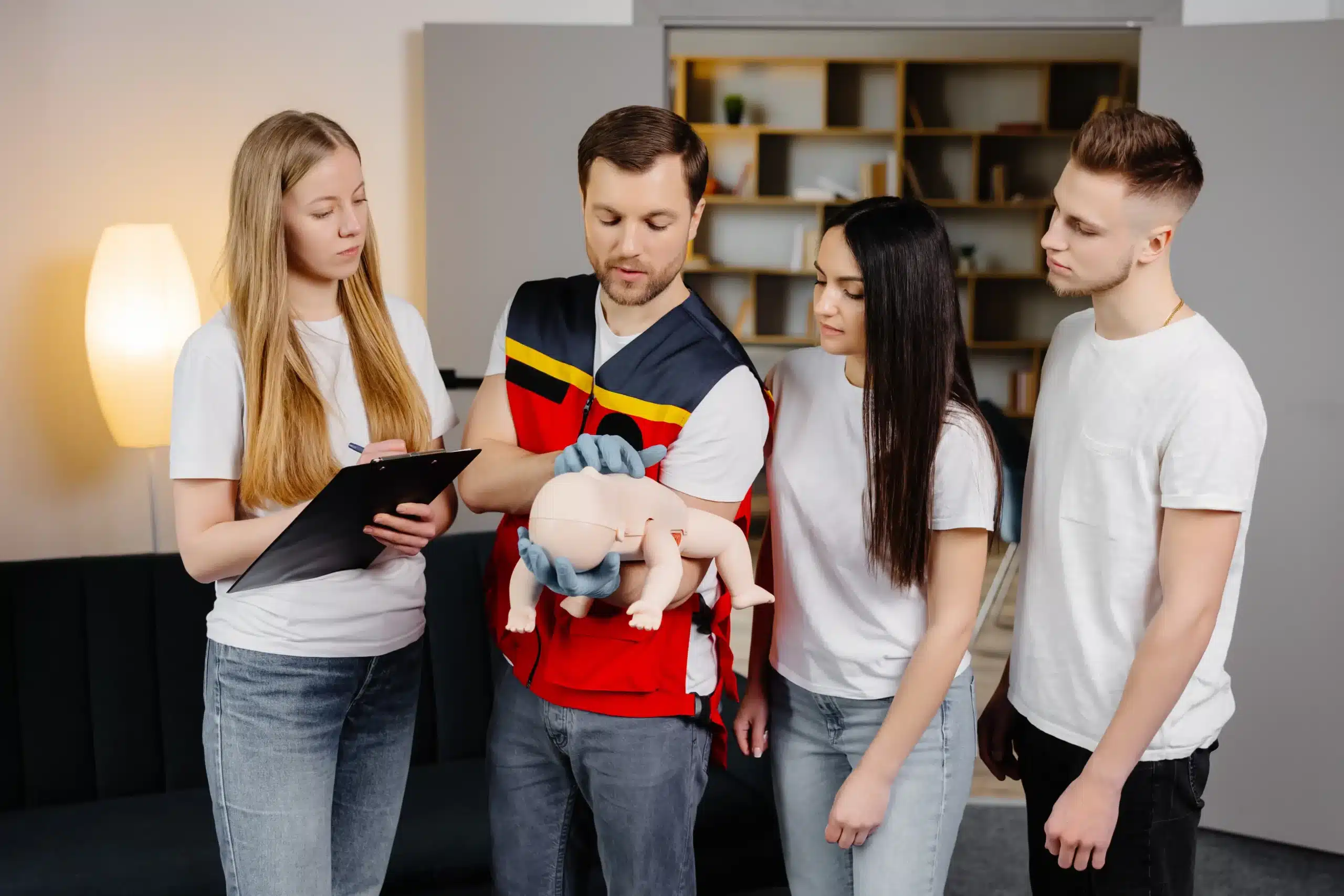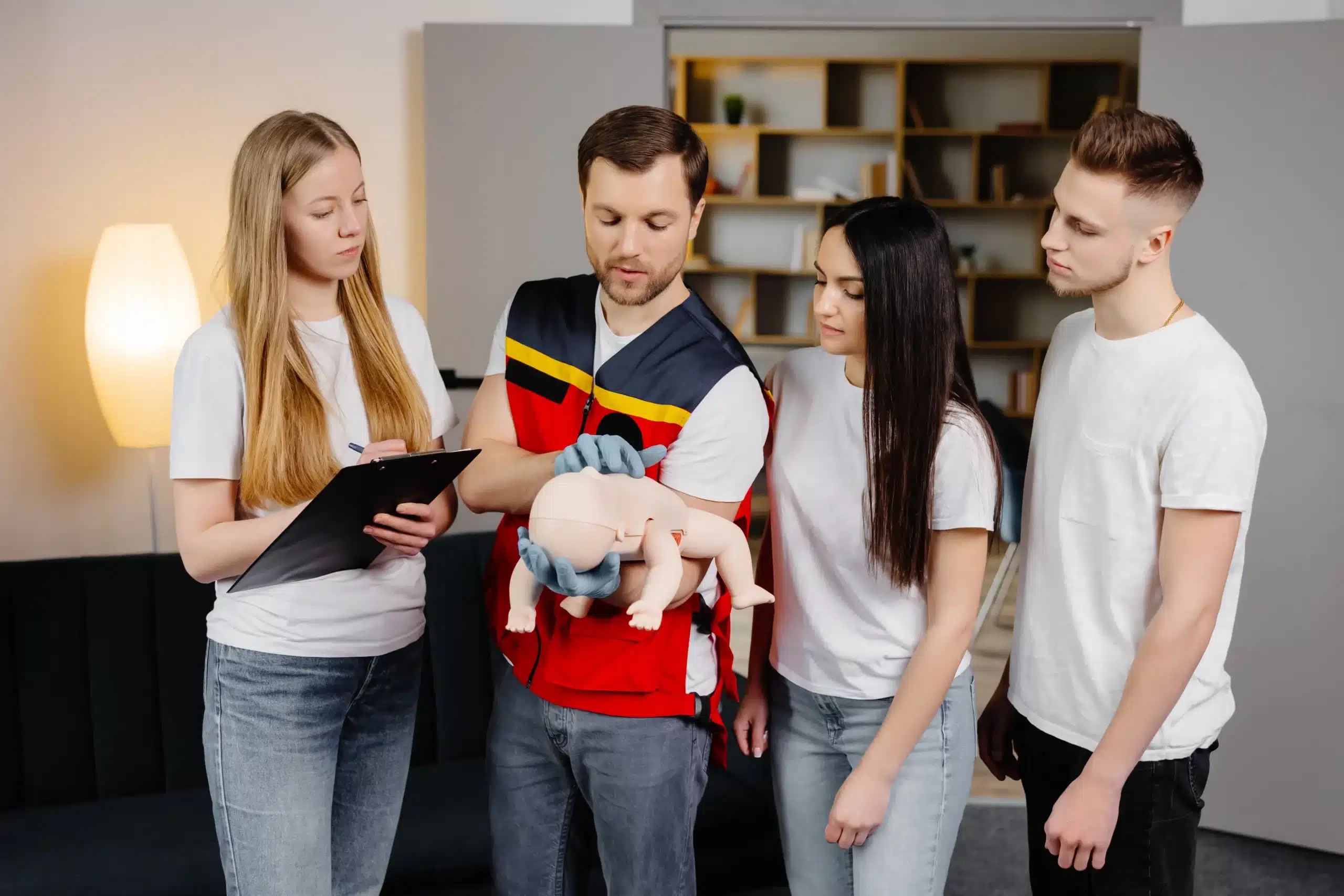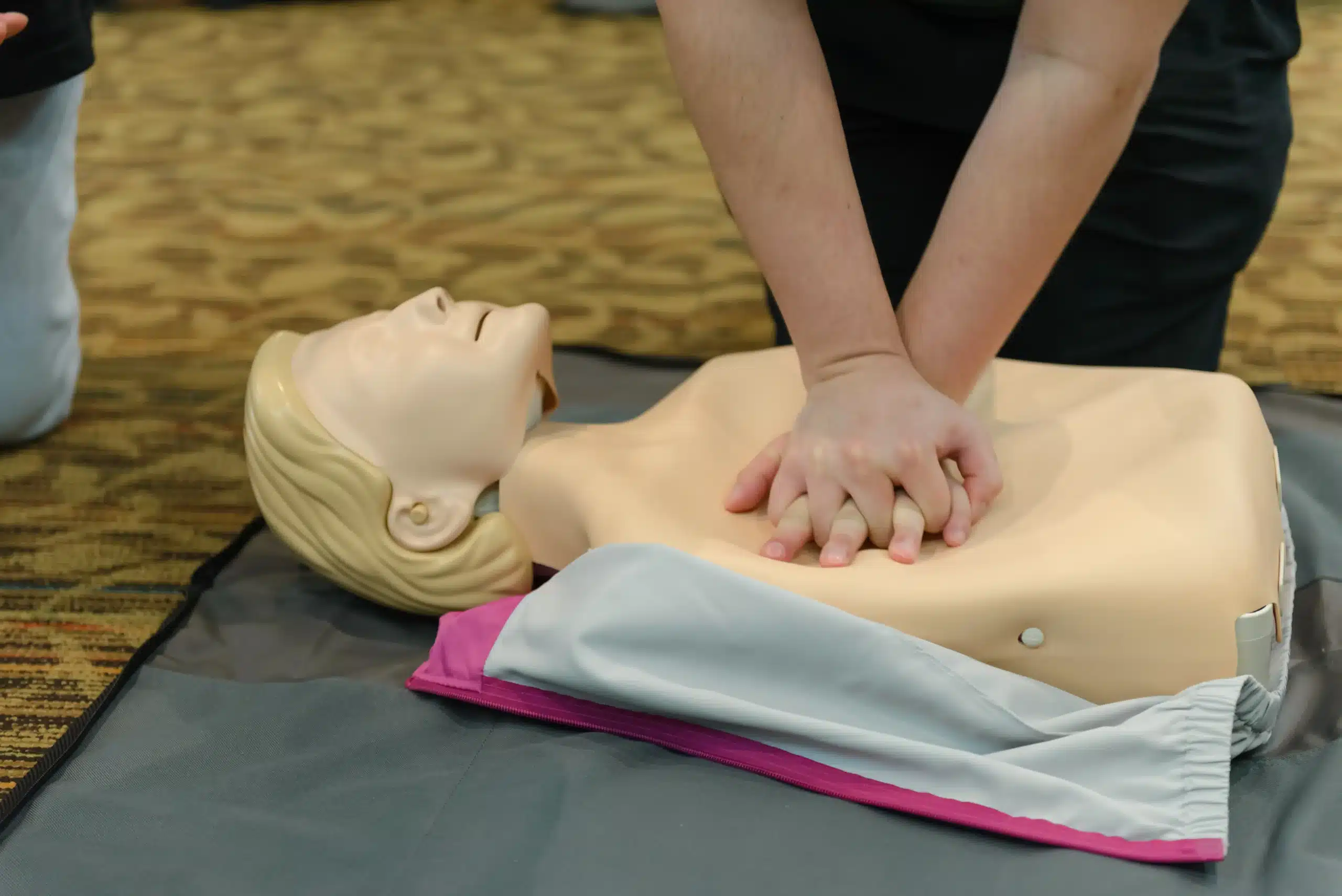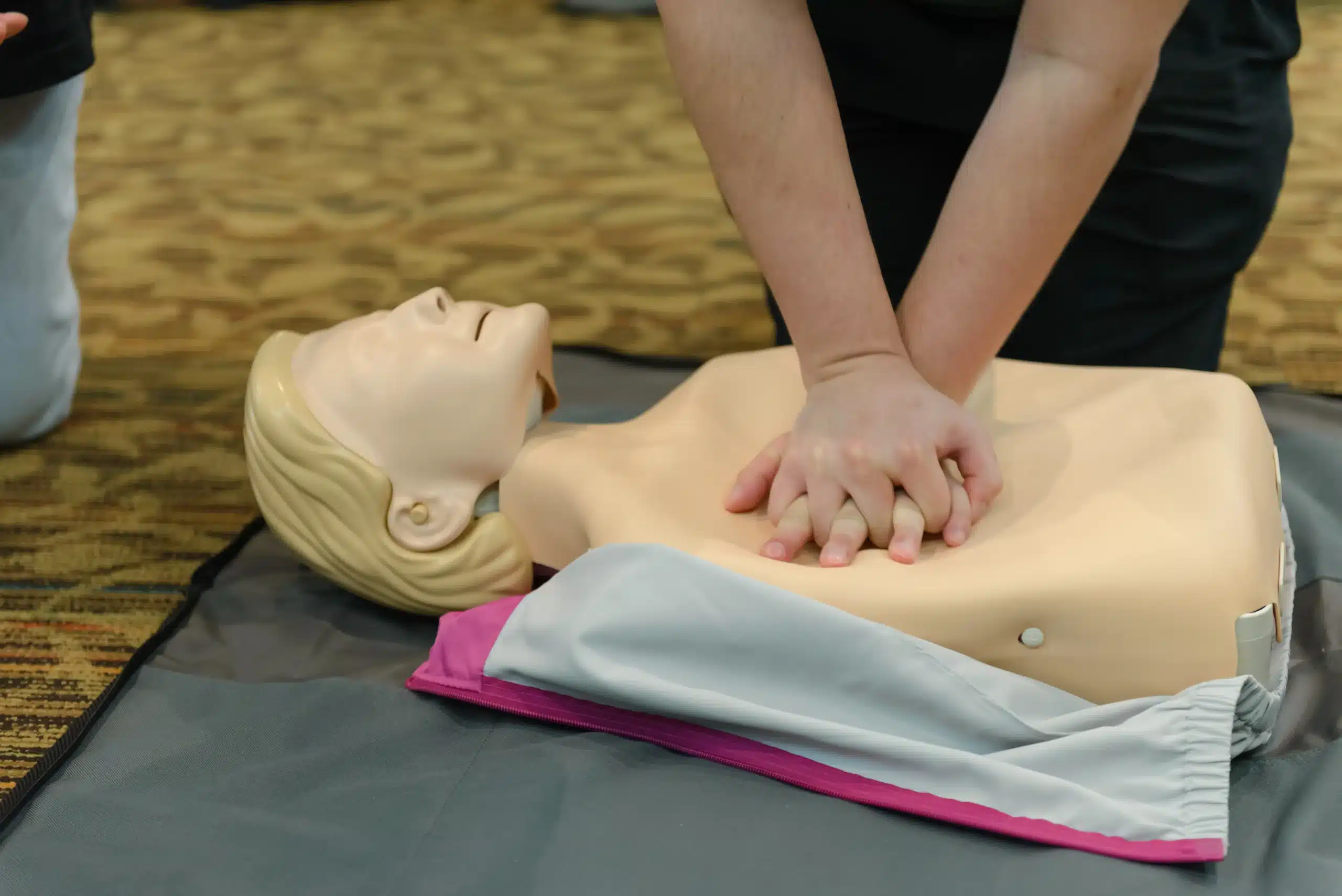In the bustling city of San Francisco, being prepared for medical emergencies is a valuable skill. This guide provides a comprehensive overview of basic life support (BLS) in San Francisco, covering everything from understanding the core components of BLS to finding the right certification course for your needs. We’ll explore the importance of BLS training, the various certification providers in San Francisco, different training formats, associated costs, and how to overcome common challenges in BLS training. Whether you’re a healthcare provider or simply want to be prepared for emergencies, this guide equips you with the knowledge and resources to pursue BLS certification in San Francisco.
Key Takeaways
- BLS skills empower you to act: From clearing obstructed airways to performing CPR and using an AED, BLS training gives you the confidence to handle emergencies effectively. Find a course that suits your needs and learning preferences.
- Select a reputable training provider: Look for AHA-certified training centers like Safety Training Seminars, known for their convenient locations, flexible scheduling, and commitment to customer service. Consider factors such as cost, course format, and instructor experience.
- Stay prepared and current: Maintain your BLS skills through regular practice and renewal courses. Explore innovative programs like the RQI program, which offers a streamlined approach to maintaining your certification and staying up-to-date with the latest guidelines.
What is Basic Life Support (BLS)?
Basic Life Support (BLS) training equips you with the skills to respond to life-threatening emergencies. It goes beyond simple CPR and includes using an automated external defibrillator (AED) and clearing obstructed airways. These skills are crucial in various emergencies, giving you the confidence to act quickly and potentially save a life. BLS certification demonstrates a commitment to public health and safety, making it a valuable asset for both personal and professional reasons. You can find BLS certification courses offered daily throughout Northern California.
Core BLS Components
BLS training focuses on providing immediate, supportive care during emergencies. This includes maintaining an open airway and performing rescue breathing or CPR until professional medical help arrives. Learning how to use an AED is also a critical component of BLS training. These combined skills form the foundation of effective emergency response, enabling individuals to provide crucial assistance in time-sensitive situations. BLS classes typically cover CPR, AED use, and how to relieve airway obstructions.
Why BLS Training Matters in Healthcare
BLS training is fundamental to public health and safety, especially in a bustling city like San Francisco. For healthcare professionals, BLS certification is often a job requirement and provides the essential skills to handle emergencies effectively. The American Heart Association RQI program offered by Safety Training Seminars is a popular way for healthcare providers in San Francisco to obtain their BLS certification. Whether you’re a medical student, a seasoned healthcare worker, or simply someone who wants to be prepared, BLS training empowers you to make a difference in critical situations.
Top BLS Certification Providers in San Francisco
Finding the right BLS certification course is crucial, whether you’re a healthcare professional or want to learn life-saving skills. Here’s a look at some of the leading providers in San Francisco:
Safety Training Seminars
Safety Training Seminars offers a comprehensive range of American Heart Association (AHA) courses, including BLS, ACLS, PALS, CPR, and First Aid. With a focus on customer service and flexible scheduling, they provide classes daily across numerous locations in Northern California. Their low price guarantee ensures competitive pricing. Safety Training Seminars serves San Francisco, Daly City, San Mateo, and Oakland. Visit their website for more information.
American Red Cross
The American Red Cross is a well-known provider of BLS training, offering various learning formats. They provide both in-person classes and blended learning options that combine online coursework with hands-on skills sessions. You can explore their BLS training on their website.
Revive CPR
Revive CPR offers AHA-certified BLS, CPR, and First Aid classes in San Francisco. They emphasize instructor-led, hands-on training without the use of voice-assisted manikins. Visit the Revive CPR website for details on their courses.
Heart Start CPR
Heart Start CPR is an AHA-certified training center specializing in BLS, ACLS, PALS, and fire training. With a long history of providing AHA-approved courses, they train thousands of students annually. Learn more about their BLS classes on their website.
Bay Area CPR
Bay Area CPR provides AHA courses, including BLS, ACLS, PALS, and CPR, with classes offered daily in over 60 cities. Students receive an official AHA certification card valid for two years upon completion. Explore their course offerings in San Francisco.
BLS Training Formats and Options
Finding the right BLS training format is key to successfully completing your certification. Whether you thrive in a traditional classroom, prefer the flexibility of online learning, or appreciate a combination of both, there’s a BLS course format designed for you. Let’s explore the various options available.
In-Person Classes
In-person BLS classes offer a hands-on learning experience, perfect for those who value direct interaction with instructors and peers. This format allows for immediate feedback on your technique and provides opportunities to ask questions and clarify any doubts in real-time. For healthcare professionals in San Francisco, the American Heart Association’s Resuscitation Quality Improvement (RQI) program is a popular choice for in-person training, leading to official AHA BLS, ACLS, and PALS certification cards. Safety Training Seminars offers these in-person courses, fostering a collaborative learning environment where you can practice your skills in a controlled setting.
Online Courses
If your schedule demands flexibility, online BLS classes might be the perfect fit. These courses deliver the same comprehensive training and certification as in-person classes but allow you to learn at your own pace and convenience. Providers like Heart Start CPR offer online BLS certification, empowering you to complete the coursework whenever and wherever it suits you. This format is ideal for those juggling multiple commitments or who prefer self-directed learning.
Blended Learning
Combining the best of both worlds, blended learning offers a mix of online coursework and in-person skills sessions. You can complete the theoretical portion online at your own pace and then attend a hands-on session to practice and demonstrate your skills. Revive CPR offers this blended format for BLS and CPR training in San Francisco, streamlining the learning process while ensuring you receive practical, hands-on experience.
RQI Program at Safety Training Seminars
The RQI program, offered by Safety Training Seminars, provides a streamlined path to BLS certification. This program involves online learning followed by a hands-on skills evaluation, ensuring you’re proficient in the necessary techniques. This efficient approach is particularly beneficial for healthcare professionals needing a quick and effective way to obtain or renew their BLS certification. The RQI program focuses on maintaining high-quality resuscitation skills and offers a convenient way to stay current with the latest guidelines.
BLS Certification: Cost and Value
Getting BLS certified is an investment in your skills and career. Understanding the associated costs and the value you receive is key to making an informed decision. Let’s break down the expenses involved and why BLS certification is worth it.
Initial Certification Costs
The cost of your initial BLS certification varies depending on the training provider and the format you choose (online, in-person, or blended learning). In San Francisco, providers like Safety Training Seminars offer competitive pricing on BLS courses through the American Heart Association. It’s always a good idea to compare prices from different providers and check for any available discounts.
Renewal Costs
Your BLS certification is typically valid for two years. Renewal courses are generally shorter and less expensive than the initial certification. This recurring cost ensures your skills stay sharp and your certification remains current. You’ll receive your American Heart Association certification card on the same day you complete the course, whether it’s for initial certification or renewal.
Group Rates and Discounts
If you’re part of a group needing BLS certification—perhaps coworkers, a community organization, or a group of students—inquire about group discounts. Many providers, including Safety Training Seminars, offer reduced rates for group bookings. This can be a cost-effective way to get everyone certified together. As a woman-owned business, Safety Training Seminars understands the needs of diverse groups and strives to make training accessible, offering courses daily across over 60 locations throughout Northern California.
Safety Training Seminars’ Low Price Guarantee
Safety Training Seminars offers a low price guarantee on their BLS courses. This means you can be confident you’re getting high-quality training at a competitive price. They are committed to providing affordable and accessible AHA-certified courses in San Francisco and throughout Northern California.
BLS Course Duration and Content
Understanding the structure and content of a BLS course can help you prepare and choose the right class for your needs. Here’s what you can expect:
Typical Course Length
A typical BLS course takes about 4.5 hours, though group training sessions may run a bit longer. This timeframe allows for in-depth instruction and ample practice time. Safety Training Seminars offers various BLS course schedules to accommodate busy professionals and diverse schedules.
Key Topics Covered
BLS courses cover essential life-saving techniques applicable to various emergencies. You’ll learn adult, child, and infant CPR, how to use an automated external defibrillator (AED), and how to relieve airway obstructions. The training emphasizes providing immediate supportive care, including maintaining a clear airway and performing rescue breathing or CPR, until professional medical help arrives. Safety Training Seminars structures its courses with real-life scenarios to make the training engaging and practical.
Hands-On Skills Practice
BLS certification isn’t just about theory—it’s about developing practical skills. At Safety Training Seminars, classes are instructor-led and hands-on, ensuring you get personalized guidance and plenty of practice. Unlike some programs that rely on voice-assisted manikins (VAMs), our courses prioritize direct interaction with certified instructors. For a quicker certification route, consider the RQI program, which combines online learning with a hands-on skills test.
AHA-Certified Instructor Guidance
Learning from experienced professionals is crucial for effective BLS training. At Safety Training Seminars, our instructors are American Heart Association-certified experts dedicated to providing high-quality instruction. As a woman-owned AHA Training Center, we’re committed to creating a supportive and informative learning environment for all our students. You can register for upcoming BLS courses in San Francisco on our website.
Choose the Right BLS Course
Choosing the right BLS course is crucial for effective learning and certification. Consider these factors to ensure the course aligns with your specific needs and goals.
Factors to Consider
When selecting a BLS course in San Francisco, think about your individual requirements. Are you a healthcare professional needing recertification, or are you learning these lifesaving skills for the first time? Do you prefer a traditional classroom setting or the flexibility of online learning? Understanding your learning style and scheduling needs will help you find the perfect fit. Consider factors like location, course format, and the training provider’s reputation. In San Francisco, CPR and BLS classes are available for everyone, from concerned parents to seasoned medical professionals.
Accreditation and Certification Validity
Ensure your chosen course offers a valid and recognized certification. Look for courses accredited by reputable organizations like the American Heart Association (AHA). AHA-certified training centers, such as Safety Training Seminars, maintain high standards and provide certifications widely accepted in the healthcare field. This ensures your certification is valuable and meets employer requirements. Learn more about the importance of BLS certification.
Class Availability and Flexibility
Balancing work, family, and other commitments can make scheduling a challenge. Look for providers offering various class times and formats to fit your busy schedule. Safety Training Seminars, for example, provides AHA certification courses seven days a week across numerous locations in Northern California. Flexible options like blended learning (combining online coursework with in-person skills sessions) can also be a great solution.
Preparation Support and Resources
A quality BLS course should offer more than just the certification itself. Look for programs that provide comprehensive study materials, practice resources, and ongoing support. For healthcare professionals seeking a streamlined approach to BLS certification and renewal, the RQI program offered by Safety Training Seminars is a valuable option. This program combines online learning with hands-on skills sessions and emphasizes continuous quality improvement in resuscitation techniques.
Renew Your BLS Certification
Keeping your BLS certification current is essential for any healthcare professional or individual working in a field requiring these life-saving skills. It ensures you’re equipped with the most up-to-date knowledge and techniques. Here’s what you need to know about renewing your BLS certification in San Francisco.
Renewal Requirements and Frequency
BLS certifications are typically valid for two years. It’s important to keep track of your expiration date and plan for renewal accordingly. Aim to begin the renewal process about 30 days before your certification expires to avoid any lapse in your credentials. Renewal courses are available, often streamlining the process for those already familiar with the core concepts. Check with your certifying organization, such as the American Heart Association, for specific renewal requirements.
Maintain Your Certification
Maintaining your BLS certification demonstrates your commitment to providing high-quality care and staying prepared for emergencies. If your certification is nearing its expiration date, you can enroll in a BLS renewal course. These courses cover the essential skills and knowledge required to maintain your competency in BLS. Providers like Safety Training Seminars offer convenient renewal courses to help you stay current. Staying certified ensures you can confidently respond to emergencies and provide effective care.
Importance of Regular Skill Updates
Regularly updating your BLS skills is crucial. Medical guidelines and best practices can change, and renewal courses incorporate these updates to ensure you’re providing the most effective care. Plus, regular practice reinforces your skills and builds confidence, allowing you to respond effectively under pressure. The emphasis on practical skills and critical thinking in these programs, like those offered by the Red Cross, ensures you’re well-prepared for various emergency situations. Staying current with your BLS certification means you’re prepared to make a real difference when it matters most.
Overcome BLS Training Challenges
Getting your BLS certification is a rewarding experience, but it’s not without its challenges. Understanding these hurdles ahead of time can help you prepare and get the most out of your training. Let’s explore some common difficulties students face and how to address them.
Communication Barriers
Effective communication is crucial in emergency situations. For students who are deaf or hard of hearing, standard BLS training can present significant obstacles. Research highlights the communication difficulties these students often face, emphasizing the need for more inclusive training methods. Visual aids, sign language interpreters, and modified instruction can create a more accessible learning environment. Safety Training Seminars is committed to providing reasonable accommodations for students with disabilities. Contact us to discuss your specific needs.
Mixed Learning Outcomes
While studies show that people with various disabilities can learn and perform BLS maneuvers, outcomes can vary. Some students may find certain skills, like chest compressions or rescue breaths, more challenging than others. It’s important to remember that everyone learns at their own pace. Don’t get discouraged if you need extra practice or personalized instruction. A good instructor will recognize these differences and offer tailored support. Safety Training Seminars prioritizes individual attention to ensure all students master the necessary skills.
Skill Retention Strategies
One of the biggest challenges in BLS training is retaining the information and skills you’ve learned. It’s easy to forget critical steps or lose proficiency over time. Regular practice and refresher courses are key to maintaining your skills. Consider joining a study group, practicing with friends or family, or taking advantage of online resources. Safety Training Seminars offers the RQI program, a self-directed, skills-based program that allows healthcare professionals to refresh their resuscitation skills through low-dose, high-frequency practice. This approach helps reinforce essential techniques and maintain competence.
Practical Application Opportunities
Knowing how to perform BLS is essential, but having the opportunity to apply those skills in real-life scenarios is invaluable. Studies have shown a direct correlation between regular BLS training and improved survival rates from out-of-hospital cardiac arrest. While we hope you never have to use your BLS skills in a real emergency, being prepared can make all the difference. Look for volunteer opportunities in healthcare settings or participate in community CPR events to gain practical experience and build your confidence. Check our website for upcoming BLS courses and events in the San Francisco area.
Prepare for Your BLS Course
Getting ready for your BLS certification course doesn’t have to be stressful. A little preparation goes a long way in ensuring you’re ready to learn and practice these lifesaving skills.
Pre-Course Study Materials
Before your BLS class, take some time to review the core concepts. Brushing up on CPR, AED use, and airway management techniques will give you a head start. Understanding these fundamentals beforehand will make the in-class learning experience more effective. Check with Safety Training Seminars about their BLS course to see what pre-course materials they recommend.
What to Bring to Class
Knowing what to expect and what to bring on class day can ease any pre-class jitters. You’ll generally need a valid photo ID. Your instructor may also request specific materials, so it’s always a good idea to confirm beforehand. Safety Training Seminars offers classes daily across numerous locations, making it easy to find a time that works for your schedule.
Tips for Success
Want to get the most out of your BLS training? Consider a program that incorporates the American Heart Association’s RQI program. This approach offers a streamlined and efficient path to BLS certification, especially for healthcare professionals. Remember, participating in CPR and first-aid training contributes to a safer San Francisco community. You’re not just learning skills; you’re becoming a valuable resource.
Find and Schedule BLS Classes in San Francisco
Finding the right BLS class in San Francisco doesn’t have to be difficult. With various options, you can find a course that fits your schedule and learning preferences. Let’s explore how to find and schedule your BLS training.
Online Booking Tools
Many training providers, like Safety Training Seminars, offer online scheduling. This simplifies the process, allowing you to view available dates, choose a convenient time, and register quickly. Visit Safety Training Seminars’ website to book your BLS class using their online system. You can also find their ACLS and PALS courses there as well.
Convenient Locations
Safety Training Seminars offers BLS classes throughout San Francisco and nearby cities, including Daly City, San Mateo, and Oakland. With over 60 locations in Northern California, they make it easy to find a class close to home. This convenient access minimizes travel time and lets you concentrate on your training. Explore their website for more information about course offerings and locations.
Emerging Trends in BLS Training
Healthcare is constantly changing, and so is BLS training. The Resuscitation Quality Improvement (RQI) program is a significant advancement. RQI provides a flexible and personalized approach to BLS training, allowing healthcare professionals to refresh their skills through frequent, short practice sessions. This method ensures providers are always prepared for emergencies. RQI is a valuable option for medical professionals in San Francisco seeking a modern and efficient way to maintain their BLS, ACLS, and PALS certifications.
Related Articles
- Find the Best BLS Classes in San Francisco – San Francisco CPR Classes
- Basic Life Support (BLS) in SF: The Ultimate Guide – San Francisco CPR Classes
- Advanced Cardiac Life Support (ACLS) in SF: Get Certified – San Francisco CPR Classes
- BLS CPR Classes in San Francisco (Bayshore)
- ACLS Renewal in SF: Your Complete Guide – San Francisco CPR Classes
Frequently Asked Questions
How long does it take to get BLS certified? A BLS course typically lasts about 4.5 hours, although it might run slightly longer for groups. This allows enough time for in-depth instruction, demonstrations, and hands-on practice.
What’s the difference between BLS and CPR? CPR is a core component of BLS, but BLS training encompasses more than just CPR. It also includes using an AED and relieving airway obstructions. BLS certification provides a broader range of skills for responding to medical emergencies.
How much does BLS certification cost? The cost varies depending on the training provider, course format (online, in-person, or blended), and whether you’re getting initially certified or renewing. It’s wise to compare prices and check for discounts, especially if you’re registering with a group.
How often do I need to renew my BLS certification? BLS certification is generally valid for two years. It’s a good idea to start the renewal process about a month before your certification expires to ensure continuous coverage.
What if I have a disability and need special accommodations for the training? Reach out to the training provider to discuss your specific needs. Reputable providers like Safety Training Seminars are committed to providing reasonable accommodations to ensure everyone has access to this important training.


